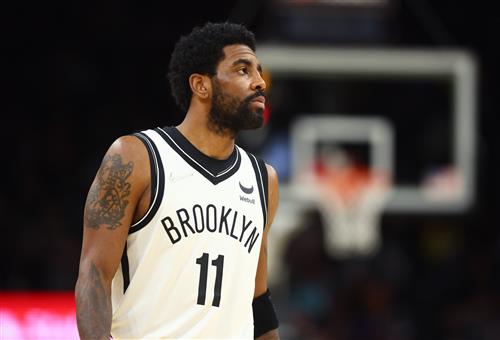
Ready for free agency yet? While the Warriors and Celtics do battle in the NBA Finals, the league’s other 28 teams are already full-speed ahead into the offseason.
Although teams are forbidden from agreeing to deals until June 30, and no executive would dare to have a handshake agreement before that time (certainly I would not have committed such a heinous crime in my time in Memphis, out of profound respect for the dictates of the Collective Bargaining Agreement), front-office staff are already busily sussing out the market for players, watching film and evaluating analytic and valuation models for the key free agents.
Speaking of which … I have a valuation model of my own. It’s called BORD$ for those of you who haven’t been reading the past few years, which takes my BORG (Big Ol’ Rating) system for rating players relative to replacement level, adjusts for improvement/decline based on their age, estimates minutes played for the coming season and then produces BORD$ (Big Ol’ Rating Dollars). (A more detailed explanation of how BORG works can be found here, although two of the key inputs have changed, as noted below.)
As with the past two seasons, I have to give a hat tip to two publicly available analytics ratings that build the core of BORG: the “DARKO” rating by Kostya Medvedovsky and the “LeBron” rating by BBall Index. My own PER rating is also a small portion of this rating, amounting to one-eighth of it for non-centers and zero for centers, and somewhere in between for those who played center part-time. (This was done not for reasons of ego but stability; PER’s weaknesses are well-known, but its ability to hold steady across teams and seasons makes it very valuable when the other metrics involved weigh on-court vs. off-court data more heavily. While its overall impact on this is small, eye-testing the ratings with and without the PER component showed it to be useful.)
I also made a few other small tweaks — adjusting minutes played at center (which are less valuable) based on distributions on Cleaning the Glass, capping the negativity of defensive values for significant players (a few of which strained belief and may have been too harsh), regressing low-minutes players to replacement level and allowing for an 8.5 percent rise in the salary cap this coming season.
Based on that information, I created my valuations for every free agent available this summer. I’ll have a valuation for every relevant player based on position coming soon, but for now, we’re going to look at the top 25 players — which, coincidentally, are the only 25 players who rate as worth more than the non-taxpayer midlevel exception (MLE) of approximately $10.3 million for the coming season.
Finally, one crucial note: This is a dollar valuation for 2022-23 only. That impacts the decision-making on a multi-year deal in particular; on such a contract, older players should likely command less than the numbers listed here, while younger players should command more. In the case of three- and four-year deals for the oldest and youngest players, the variation could be significant.
I’ve also included a couple of other categories this year: players who are unlikely to be free agents but theoretically could become one and had BORD$ valuations above $10 million; and players whose valuations are likely to take a significant hit because of serious injuries suffered in 2021-22.
With all that said, here’s a look at the top BORD$ free agents this summer, along with their projected value, option and/or restricted status, if any, and their most recent employer
Tier I: The Max All-Stars
1. Kyrie Irving, PG, Brooklyn (player option): $48,497,568
BORD$ doesn’t have to deal with Irving in the locker room, but despite his intermittent availability over the past two seasons, he still rates as a hugely valuable player. Irving can opt out of his current deal that pays him $36.9 million next season and become a free agent, where his maximum salary for next season would be $42.7 million.
Irving will turn 31 next season, so the out years on a four- or five-year deal for his max don’t rate out as profitable, but in the short term, the numbers say he’d be likely to justify a max deal. Even in his limited time in 2021-22, he averaged 27 points a game with 59 percent true shooting … and it wasn’t a particularly good year by his standards.
The other piece of this, of course, is what options Irving has besides the Nets. With the cap-room teams mostly rebuilding and not really needing a point guard, and some other teams turned off by the assorted sideshows that accompanied his presence in Boston and Brooklyn, the Nets might be able to negotiate something short of the five-year, $245 million deal he’d be eligible to receive.
2. James Harden, SG, Philadelphia (player option): $46,617,283
Harden has a player option for $47.4 million next season, and despite his losing a step and not being the MVP-caliber force he was in Houston, the numbers suggest he’d still likely produce roughly enough to justify the money. If he opts out, he can re-sign a new deal starting at a maximum of $46.5 million.
Things get tricky, however, when we look into longer time horizons. Harden turns 33 in August; clearly, maxing out for the full five years he’s eligible seems nuts. (That would be a $270 million payout, by the way.) One wonders how much the Sixers would be willing to commit here, and for how many years.
As with Irving above, there is also a limited market for Harden outside Philadelphia. He might be tempted to just opt in for this season and try again for a big payday next summer, when there are far more potential cap-room teams as landing sites. Alternatively, signing a longer deal at less than max money would go a long way toward smoothing out Philly’s luxury-tax concerns.